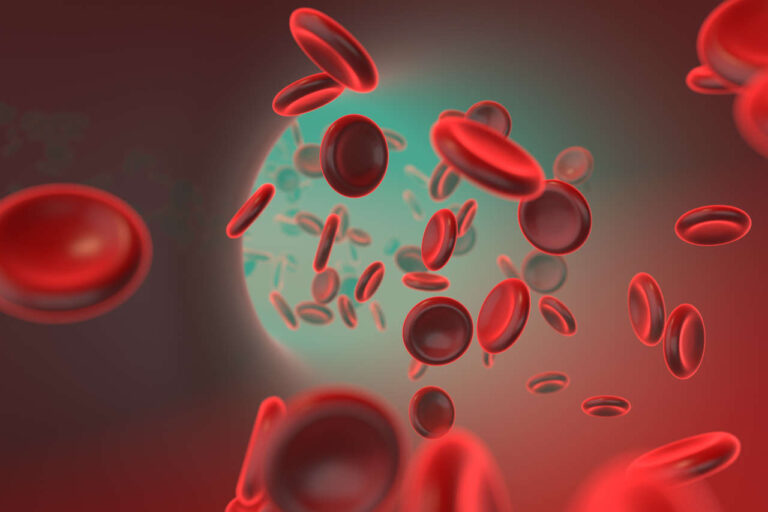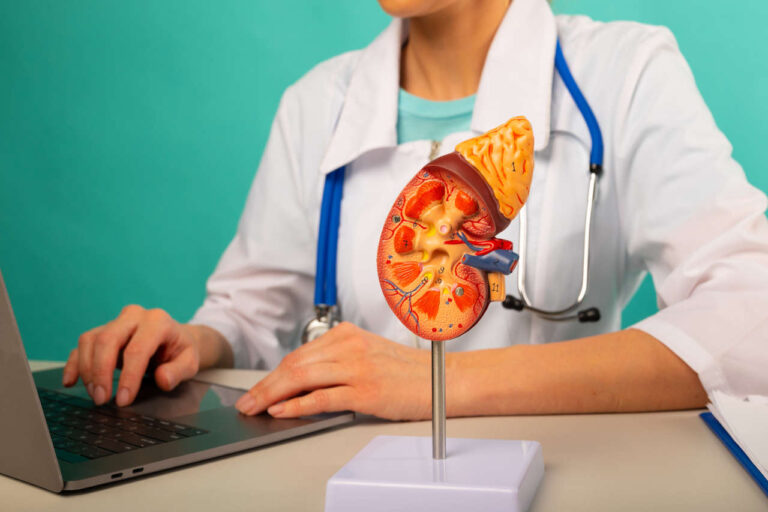
Immune globulin (pronounced [i MYUN GLOB yoo lin]), is available under several other brand names, the most common ones being Cuvitru, Gammagard, GamaSTAN, Gammaked, Gamunex-C, Hizentra, Hyqvia, Octagram, and Privigen, among many others. Immune globulin is a blood product derivative. Treatment with immune globulin is typically referred to as immunoglobulin replacement therapy (IRT).
Immune globulin is made of antibodies known as immunoglobulins, which are found in blood plasma. Immune globulin is extracted from the blood plasma of healthy donors, and before being used for IVIG therapy, the plasma is purified and examined for the presence of serious infections such as hepatitis and AIDS. In people with a weak immune system, it is used to treat, prevent, or lessen the severity of infections. It may strengthen your immune system, helping you to fight infections and stay healthy. It can also increase platelets and be used to treat neuromuscular illnesses and various other conditions.
Get IVIG Prior Authorization
How is Immune Globulin Used?
Immune globulin has been approved by the Food and Drug Administration (FDA) for a wide variety of conditions, including:
- Immune deficiencies such as immune thrombocytopenia (ITP)
- Prevention of measles, rubella, varicella-zoster virus, or hepatitis A virus
- Chronic inflammatory demyelinating polyneuropathy (CIDP)
- Polyneuropathy with chronic inflammatory demyelination
- Exacerbation of multiple sclerosis or myasthenia gravis
- Prevention of hypogammaglobulinemia
- Guillain-Barre syndrome (GBS)
- Kawasaki disease
- Myositis
- Lupus
- And many more
In autoimmune disorders such as lupus, immune globulin therapy may help your body increase low red blood cell levels. Low levels of red blood cells can lead to anemia and fatigue. IRT helps prevent white blood cells from damaging red blood cells in Lupus patients.
In patients with myositis, immune globulin therapy may prevent the immune system from damaging muscle cells.
IRT works in different ways to treat different disease states, especially autoimmune disorders, with the ultimate goal to strengthen the immune system. Different brand names are used to treat different disease states. Immune globulin can be prescribed alone or with other medications simultaneously. It contains IgG antibodies capable of opsonizing and neutralizing microbes and toxins.
Available Formulations
Immune globulin is available in multiple different formulations and sizes depending on the brand. It is available as intravenous immune globulin (IVIG), subcutaneous immune globulin (SCIG), or intramuscular formulations. It can be injected into the vein, subcutaneously under the skin, or intramuscularly into the muscle.
Directions for Use
Infusions can be administered either on a monthly, weekly, or daily basis, depending on the indication for use and the patient’s status. Always administer each initial IV dose under medical supervision. Dosage is calculated based on patient weight and is dependent upon the route of administration. Not all products are interchangeable with regard to the route of administration; consult manufacturer labeling.
Pretreatment
Patients should be well hydrated prior to infusion. Many patients do not require premedication prior to receiving IVIG; however, premedication can be considered (e.g., acetaminophen, a nonsteroidal anti-inflammatory drug, a glucocorticoid, or diphenhydramine), especially if there have been prior reactions or other reasons for special concern.
Get IVIG Copay Assistance
Speak to a SpecialistIntramuscular (IM) Administration
Intramuscular injections should be in the upper thigh or deltoid muscle of the upper arm. Avoid the gluteal region due to the risk of injury. Doses greater than 10 ml should be divided and injected into multiple sites.
IV Administration
IVIG infusion can be administered as fast as 2 hours or as long as 24 hours, depending on disease state and severity and the physician’s instructions. It should be administered in a separate infusion line from other medications. If a primary line is being used, flush with normal saline (NS) or dextrose 5 % in water (D5W) prior to administration. Dose, rate, or concentration of infusion may need to be decreased in patients who may be at risk of kidney failure.
Doses vary depending on the disease state it is being used for. Typically, if the initial 30 minutes of the infusion is well-tolerated, the rate can be increased every 15 to 30 minutes as needed up to a maximum rate. Check with your physician about the rate and dose as well as the maximum rate allowed.
Decreasing the rate or stopping the infusion may help relieve some adverse effects (flushing, changes in pulse rate, or blood pressure). Epinephrine should be available during administration.
Subcutaneous (SQ) Administration
The initial dose should be administered in a healthcare setting capable of providing monitoring and treatment in the event of hypersensitivity. Follow the infusion device manufacturer’s instructions for filling the reservoir and preparing the pump using aseptic technique. Remove air from administration set and needle by priming. After the administration sites are clean and dry, insert subcutaneous needle and prime administration set. Attach sterile needle to administration set, gently pull back on the syringe to assure a blood vessel has not been inadvertently accessed (do not use needle and tubing if blood is present).
Repeat for each injection site; deliver the dose by following instructions for the infusion device. Rotate the site(s) between successive infusions. Injection sites vary based on the immune globulin product. Treatment may be transitioned to a home care setting in the absence of adverse reactions.
Missed Dose
This medicine needs to be administered on a fixed schedule. If you miss a dose, call your physician, home health caregiver, or treatment clinic for instructions.
Storage
All immune globulin products should be stored in the refrigerator. Consult manufacturer labeling for the maximum allotted time for refrigeration as it can vary based on product. Typically, once the medication has been removed from the refrigerator and left at room temperature, it must be used within the allotted time or discarded. Consult manufacturer labeling for the allotted time product should be left at room temperature. Once removed from the refrigerator, it should not be returned. It is recommended to remove it from the refrigerator and leave it at room temperature for at least 15 minutes prior to infusion or injection.
Here are a few important points to keep in mind:
- Gently swirl product if dilution is required (consult manufacturer labeling).
- Store away from direct sunlight and do not heat the product.
- Do not mix different manufacturers’ products together.
- Do not freeze the product.
- Avoid foaming and do not shake.
- Discard any unused portion of vials.
- Do not infuse or inject immune globulin into an infected area due to the risk of spreading the infection.
Get Your IVIG Dose
At-Home InfusionWhat To Avoid While Taking Immune Globulin
While taking immune globulin therapy, you must follow some precautions. Always tell your physician about any medications you are already taking. Do not take any drug or medicine (even herbals, vitamins, or over-the-counter medications) without prior consent from your physician or pharmacist. They may have some significant interactions with the immune globulin product.
Pregnancy and Immune Globulin
Use of immune globulin may not be recommended if the patient is pregnant or breastfeeding. It could be potentially harmful to the fetus during pregnancy or to the infant while breastfeeding. It may be administered during pregnancy or while breastfeeding only if the potential maternal benefit outweighs the potential fetal risk. Consult with your physician if you think you may be pregnant or if you are breastfeeding.
Side Effects
As with any other medication, you may encounter side effects while receiving immune globulin therapy. A few things to remember are:
- You may not have all the side effects listed below. Many people may experience little to no side effects. The severity of side effects may vary from person to person, so don’t compare your side effects with other people’s experiences.
- Most of the side effects will improve when therapy is discontinued.
- These side effects are easily manageable most of the time, either by readjusting the dose of immune globulin or using additional medications to treat the symptoms. Consult with your physician or pharmacist to explore available options.
- Do not hide any symptoms; if you feel any discomfort, do not hesitate to tell your physician or pharmacist about it.
Note: This is not a comprehensive list of all side effects. Talk to your doctor if you have questions.
Some of the more serious side effects of immune globulin are listed below:
Allergic Reaction/Hypersensitivity:
There have been cases reported of patients with allergic reactions to the immune globulin injection or any of its components. In addition, worsening asthma has been reported with therapy in patients with a history of asthma, sinusitis, or allergies. Signs of an allergic reaction can include rash; hives; itching; red, swollen, blistered or peeling skin with or without fever; wheezing; tightness in the chest or throat; trouble breathing, swallowing, or talking; unusual hoarseness; or swelling of the mouth, face, lips, tongue, or throat. If you are experiencing any of these symptoms, seek emergency medical attention immediately. Immune globulin may not be recommended in patients with IgA deficiency.
Aseptic Meningitis Syndrome (AMS):
AMS has been reported with immune globulin administration. It is an illness characterized by serous inflammation of a certain area of the brain, most commonly causing headaches and fever. It more typically occurs with high doses or rapid infusion. It may appear within several hours to 2 days following treatment and usually resolves within several days after discontinuation. Female patients or patients with a migraine history may be at higher risk for AMS.
Hematoma:
The risk of hematoma formation is high if the immune globulin is administered subcutaneously for the treatment of immune thrombocytopenia.
Hemolysis:
Hemolysis is the rupture or destruction of red blood cells. Intravenous immune globulin has been associated with hemolysis and can rarely lead to kidney impairment/failure. The risk for hemolysis may be increased if receiving high doses either as a single administration or divided over several days. Risk is also increased with underlying associated inflammatory conditions or non-O blood type.
Blood Composition:
Immune globulin may affect elements in the blood, for example, by increasing protein or depleting sodium in the blood.
Cardiac Complications:
There is a risk that immune globulin may cause high blood pressure. It may typically present as a very bad headache or dizziness, passing out, or a change in eyesight. Less commonly, however, it can potentially lead to a condition called thrombosis if high blood pressure is left uncontrolled. To reduce risk, adequate hydration is highly recommended before infusion. Elevated blood pressure should be controlled with medications to treat high blood pressure.
Home Infusion
We Come To YouInfusion-Related Reactions:
Risk for infusion-related reactions may be increased with initial treatment, when switching brands of immune globulin, or if treatment has been interrupted for more than 2 months. Infusion reactions may consist of fever and chills and may also include nausea, vomiting, pain, headache, dizziness, dyspnea, hypotension, rash, and weakness. If shortness of breath, swelling of the mouth or tongue, drop in blood pressure, or signs of infection occur, the infusion should be stopped immediately. If you experience a severe infusion reaction, the infusion can be re-attempted with appropriate premedications like Tylenol or Benadryl.
Pulmonary Edema:
Immune globulin can commonly cause fluid retention (also known as edema) within the lungs. In addition to pulmonary edema, immune globulin infusions can potentially lead to severe respiratory distress, hypoxemia (decreased levels of oxygen in the blood), and fever.
Kidney Dysfunction/Failure:
Short-term kidney dysfunction can rarely occur. Risk is increased in elderly patients, patients with preexisting kidney disease, diabetics, dehydrated patients, and concurrent users of other medications that may cause kidney harm. For those with higher risk, the dose, rate of infusion, and concentration of solution should be minimized. Adequate hydration prior to the infusion is highly recommended to minimize kidney damage.
Other common side effects may include:
- Eye pain/blurred vision
- Increased heart rate
- Hair loss
- Dizziness/fatigue
- Amenia
- Back/limb pain
- Stomach discomfort
- Dehydration
- Urine discoloration
- Chills/fever
Can IVIG help?
Free IVIG Treatment InfoMonitoring
Due to its many side effects, monitoring is an important part of managing immune globulin therapy. The following includes what you can expect with immune globulin use:
- Blood pressure should be regularly checked for cardiac monitoring.
- Frequent blood tests should be done to monitor labs and especially blood protein and sodium levels.
- Liver function should be monitored, especially in patients with preexisting liver complications.
- Immune globulin may not be recommended in patients with severe liver impairment.
- Some formulations contain alcohol; the non-alcohol formulation would be less harmful to the liver.
- Some brands of immune globulin may contain sorbitol; do not use in patients with hereditary fructose intolerance (HFI). Symptoms of HFI include recurrent vomiting, abdominal pain, and lower blood sugar.
- Patients should be monitored for cardiac complications, especially thrombosis.
- The risk for thrombosis is increased with advanced age, prolonged immobilization, history of thrombosis, use of estrogens, indwelling catheters, and hyperviscosity (thickening) of blood.
- For patients with higher risk, it is recommended to infuse immune globulin at the minimum dose and infusion rate possible.
FAQs
Is immune globulin a blood product?
Yes, immunoglobulin (IVIG) is a blood product made from the human serum of thousands of donors for every batch. It is the recommended therapy for people with antibody deficiency.
Will immune globulin therapy put me at risk for HIV or hepatitis?
The FDA has set manufacturing requirements requiring companies to take procedures to inactivate viruses such as hepatitis B, hepatitis C, and HIV. Detergents and solvents are used to destroy organisms in the products. Before becoming a blood donor, people are medically examined and tested for the presence of these and other infections. The blood products are thoroughly cleaned and safe to be injected.
Can I receive vaccines while on immune globulin therapy?
Certain vaccines can be taken while on immune globulin therapy; however, other vaccinations (i.e., live vaccines like MMR, varicella, etc.) should be avoided. Consult with your physician prior to taking any vaccines while on immune globulin therapy.
Can immune globulin be given at home?
Yes, most immunoglobulin treatments can be provided safely at home under the careful monitoring and supervision of a healthcare professional.
How quickly can immune globulin work?
The recovery time varies depending on the disease state and the individual patient’s reaction to the therapy. However, most people have relief within 3 to 4 weeks of starting treatment.
REFERENCES:
- Immune Globulin. In: Lexi-drugs online [database on the Internet]. Hudson (OH): Lexicomp, Inc.; 2016 [updated 4 Mar 2022; cited 8 Mar 2022]. Available from: http://online.lexi.com.
- Immune Globulin. In: In Depth Answers [database on the Internet]. Greenwood Village (CO): IBM Corporation; 2017 [cited 2022 Feb 2]. Available from: www.micromedexsolutions.com.
- Immune Globulin (Intramuscular Route, Intravenous Route, Subcutaneous Route). https://www.mayoclinic.org/drugs-supplements/immune-globulin-intramuscular-route-intravenous-route-subcutaneous-route/description/drg-20444201. Published February 1, 2022. Accessed March 2, 2022.
- UpToDate. Uptodate.com. https://www.uptodate.com/contents/immune-globulin-intravenous-subcutaneous-and-intramuscular-drug-information. Published 2022. Accessed March 18, 2022.
- Immune Globulin (Intravenous) (IGIV): Uses, dosage, side effects, warnings. Drugs.com. (n.d.). Retrieved March 8, 2022, from https://www.drugs.com/mtm/immune-globulin-intravenous-igiv.html













